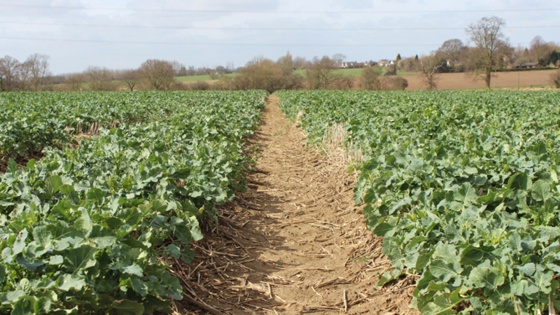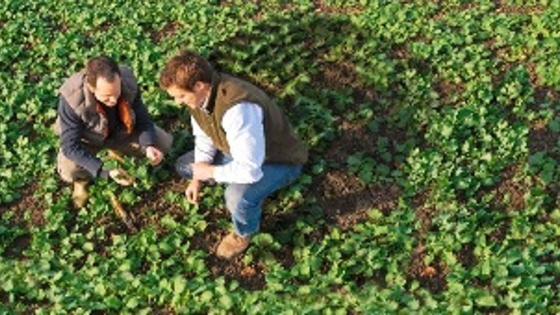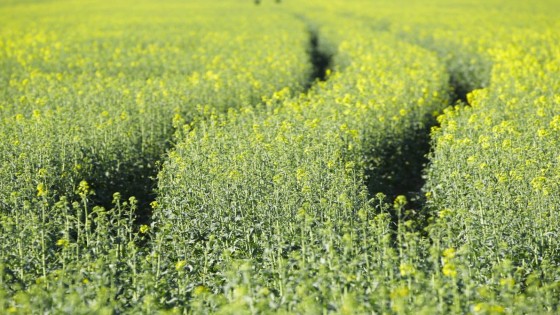Caryx is a plant growth regulator for the reduction of crop height and lodging risk in all varieties of winter oilseed rape.
Caryx®
Caryx is a plant growth regulator for the reduction of crop height and lodging risk in all varieties of winter oilseed rape.
| Label | |
|---|---|
| Safety data sheet | |
| BASF Compatibility List |
Product Details
| Active ingredient(s) | 210 g/l mepiquat-chloride and 30 g/l metconazole |
| Formulation | Water based (XX) |
| Pack size | 5 litres in outers of four |
| Crops | Winter oilseed rape |
| Maximum individual dose | 1.4 litres per hectare |
| Maximum number of treatments | One per crop (or two for a sequence of autumn and spring applications) |
| Latest time of application | Up to and including crop growth stage 59 (Yellow bud) |
| Water volume | 200-400 litres per hectare |
| Aquatic buffer zone | LERAP B |
| Other specific restrictions | This product must not be applied via hand-held equipment |
Product Overview
| Active ingredient(s) | 210 g/l mepiquat-chloride and 30 g/l metconazole |
| Formulation | Water based (XX) |
| Pack size | 5 litres in outers of four |
| Crops | Winter oilseed rape |
| Maximum individual dose | 1.4 litres per hectare |
| Maximum number of treatments | One per crop (or two for a sequence of autumn and spring applications) |
| Latest time of application | Up to and including crop growth stage 59 (Yellow bud) |
| Water volume | 200-400 litres per hectare |
| Aquatic buffer zone | LERAP B |
| Other specific restrictions | This product must not be applied via hand-held equipment |
Why Caryx?
The first oilseed rape product to justify its label approval on the strength of its growth regulation capabilities alone. In autumn, Caryx should be used on early established or forward crops, regulating top growth to withstand a hard winter and reduce lodging risk. It increases rooting to make the crop more resilient to cold and wet winter conditions and pigeon grazing. Once spring arrives, crop growth will be more uniform, helping to optimize timing for spring inputs.

Caryx® canopy management principles still apply in the era of CSFB
CSFB significantly increases lodging risk in crops which exhibit normal stem extension
Plants suffer reduced stem diameter and stem strength which is not compensated for by any reduction in height.
Caryx® significantly reduces lodging risk in three ways
- Reduces plant height
- Increases stem diameter
- Improves stem strength
In forward crops, Caryx® works, irrespective of N regime.
Caryx® reduces lodging risk
Replicated trials conducted at two locations, close to ADAS sites in North Yorkshire and near King’s Lynn in Norfolk showed both oilseed rape (OSR) crops had moderate to high level of (cabbage stem flea beetle) CSFB larvae in the stems.
In order to calculate the lodging risk, the ADAS team used a model developed in conjunction with wind engineers from Birmingham University. It takes into account stem strength, stem diameter and plant height.
“We found that CSFB larvae reduce stem strength and stem diameter. Height may be slightly reduced but not enough to compensate for the decreased stem strength; the overall wind resistance is lower and the crop is more likely to lodge,” explains Dr Berry.
“The lodging risk of a typical undamaged crop was 33%, which rose to 60% where there was CSFB damage. The risk dropped to 20% with the use of Caryx®. Typically we see height reductions of 10cm with Caryx® - that will reduce lodging risk substantially. We’ve also seen reductions of up to 20cm, how much you get, depends on the growing conditions at time of application but Caryx® is probably the most effective PGR for reducing height,” he says.
Caryx® had a positive effect on the wind resistance mainly by reducing plant height.
Impact of nitrogen regimes on lodging risk
ADAS has explored the relative impacts of reduced nitrogen applications, in conjunction with Caryx®.
“The forward crop had a high CSFB pressure of 14 larvae/plant in the March, but was otherwise exhibiting normal development,” observes Dr Berry. “In both trial cases, Caryx® significantly increased wind resistance and therefore reduced lodging risk. Despite previously finding reducing nitrogen can lower lodging risk, in this trial it did not. This may have been caused by the dry March and April, which may have affected uptake. Yield was reduced as expected,” summarises Dr Berry.
The standard nitrogen regime (in accordance with RB209 guidelines) saw a total of 140kg N/ha applied to the crop; 40kgN/ha was applied at the end of February, 60kgN/ha at green bud and 40kgN/ha at yellow bud. The experimental reduced nitrogen regime omitted the first dose.
Trial conclusions
“While it’s true that CSFB larvae impact on lodging risk is mitigated by the fact that they also reduce the height of plants, it doesn’t outweigh the negative impact on stem strength. The net effect of CSFB larvae is increased lodging risk,” says Dr Berry.
Where there is a high lodging risk – whether due to canopy size, CSFB larvae damage or a combination of both - growers have two fertiliser options. The first split can be delayed which, Dr Berry says is particularly useful for those crops with a large canopy (a GAI of 2 or more) in February. A more drastic option is to reduce the overall rate of nitrogen but this may also reduce yield and can only really be justified where the lodging risk is very high and/or fertiliser prices make it a more viable option.
“Ultimately, the most consistent and effective way to reduce lodging risk comes from using a PGR such as Caryx®,” he says.
Managing lodging risk this spring
BASF agronomy manager, Matt Keane is positive about this year’s OSR crops, while there is some variation, a combination of factors encouraged good germination and establishment.
According to Mr Keane, any crops with a GAI above 0.8 at the end of February, just before stem extension, warrants an application of Caryx®. “Usually, we recommend application rates of 0.7L/ha to 1L/ha but where crops are very large, you can go up to 1.4L/ha,” he says.
Optimum timing of applications is green bud to yellow bud, when crops are actively growing. Mr Keane advises growers to aim for green bud rather than yellow when facing a larger canopy.
“Also look at the nutrient status of that crop. Where the land is very fertile, consider upping the rate of Caryx®. Lodging at flowering reduces yield by 20% - when lodged to 450 – and an ADAS survey showed the average lodged area is 31%.”
Benefits
- In addition to reducing lodging risk, Caryx® will balance branching for yield and improve rooting for effective water uptake during seed-fill if it turns dry in May
- The effects will vary according to crop type but will be economically beneficial for all crops where GAI>0.8 (approximately 50% ground cover just before stem extension).
- 3 years of ADAS research 2020-2022 has shown:
- Csfb larvae increase lodging risk in crops with normal stem extension.
- Caryx® reliably reduces lodging risk in these crops.
- The guidance on which crops to treat still applies in the era of csfb.

Which crops & when to treat?
Earmark potential crops for Caryx® where GAI>0.8 at end of February just before stem extension
Wait for stem extension to check plant development.
- Recommendation: Caryx® 0.7-1.0L/ha at green or yellow bud. Big crops GAI>2, aim for green bud, Caryx® 1.0-1.4L/ha.
- Where csfb larvae are a concern, yellow bud application allows a ‘watching brief’ on plant development.






